Digital Nomad Guide to Living in Gran Canaria
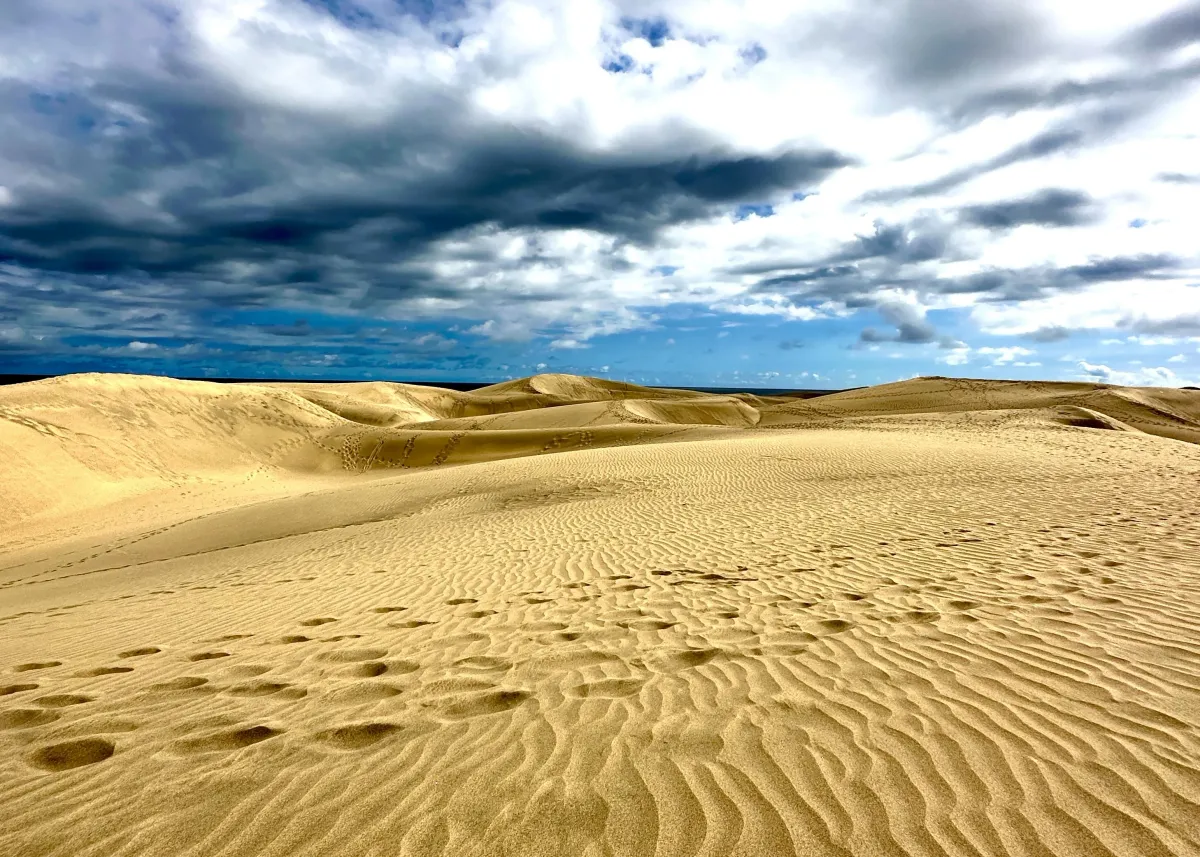
Imagine working with a view of endless blue skies, beaches full of surf spots, and a laid-back island vibe. That's Gran Canaria: a destination many digital nomads and sun-seekers alike dream about. This island is not just a destination, it's frankly a lifestyle.
In this guide, I'll dive into why this Canary Island is on the radar among the best European destinations for digital nomads and share everything you need to know to make the most of your remote work needs on this island.
Living in Gran Canaria as a Digital Nomad: Pros and Cons
Gran Canaria it's a well-developed remote hub that waits to be discovered. But like any other digital nomad place, it has its advantages and disadvantages. These are the ones I noticed while working from there.
Pros of Living in Gran Canaria
Let's start by explaining what makes Gran Canaria a hit among European digital nomads. Spoiler: it’s not just the sun and the beaches, there is so much more to it.
Great weather all year round
One of the biggest perks of Gran Canaria is obviously its consistently great weather. Here temperatures rarely dip below comfortable and the sun is almost always in attendance, with around 300 days of sunshine a year. The island’s climate is a digital nomad’s dream, offering a perfect backdrop for both work and leisure all year round.
A truly "Canarian" island
Think of Gran Canaria as Spain but with an extra dash of flair. In Gran Canaria, you will be able to immerse yourself in the true Canarian culture. Thanks to its proximity to Africa, this continent has a strong influence, which can be seen from the Berber settlements that are scattered all over the island. The island also had its own indigenous people, the Guanches, who inhabited the island before the Spanish conquest of the Canaries.
Affordable living in a sunny location
Another of Gran Canaria's big draws is its affordability, giving you more bang for your buck compared to other European destinations. Here, the cost of living doesn't bite into your budget too hard and your money will go a long way compared to the other (and more expensive) Canary Islands like Lanzarote or Fuerteventura.
A strong remote work community and internet infrastructure
In Gran Canaria, there are plenty of coworking spaces and the community of digital nomads is pretty active. On top of that, you have the fastest internet in the Canary Islands and, sometimes, in most places in Europe.
Easy to explore and hard to get bored of
Gran Canaria may not be the biggest in size, but it's huge in adventure. The geography of the island makes exploring it super fun and easy. Hidden beaches, mountain trails and canyons are all just a short drive away, so you will be able to enjoy some spontaneous explorations both during weekdays and the weekend. It's really a paradise for outdoor enthusiasts.
Cons of Living in Gran Canaria
While Gran Canaria is a digital nomad's paradise in many ways, it's only fair to talk about the flip side too.
You need a car to explore it
Unless you're planning to stick around Las Palmas, having a car is almost a necessity in Gran Canaria. The public transport system is decent, but to really explore the island's hidden gems, a car is invaluable. And in Las Palmas, be ready for the usual city life drawbacks like air and noise pollution, heavy traffic, and the eternal struggle for parking spots, often limited to 2 hours and not free.
The beaches are not quite a tropical paradise
Gran Canaria's beaches are a surfer’s dream but might not tick all the boxes for everyone. In Las Palmas, you might come across beaches with plenty of Sargassum (algae), which, let's be honest, aren’t the most pleasant in terms of smell. The waves are fantastic for surfers but can be overwhelming for nomad families or those looking for calm, swim-friendly beaches. The most picturesque beaches are in Las Palmas and Maspalomas, which, unfortunately, are also the most touristy areas.
Over-development in major areas
If you are dreaming of an untouched island paradise, well, parts of Gran Canaria might not live up to that. There's significant over-development around major towns and industrial areas scattered across the island. While there are plenty of natural spots to enjoy, like the Maspalomas Dunes and Roque Nublo, the reality is that as a digital nomad, you will likely spend most of your time in the island's hotspots, which are far from the idyllic island life you might envision. So, if you expected the Canary Island from a quick picture you saw on Instagram, you'll likely be disappointed. However, if you get a car and you are ready to drive for at least an hour or two, then you will have plenty of opportunities to enjoy the beautiful nature that Gran Canaria has to offer!
Best Areas to Stay in Gran Canaria
Las Palmas de Gran Canaria: Best for amenities
Las Palmas, the capital, is a no-brainer for nomads who love the city vibe or like to surf. It's a bustling center with all the urban perks you'd expect: great cafes, coworking spaces, and lively nightlife.
In particular, the historic district of Vegueta, and the beachside promenade of Las Canteras are hotspots for those who want the best of city life and beach lounging.
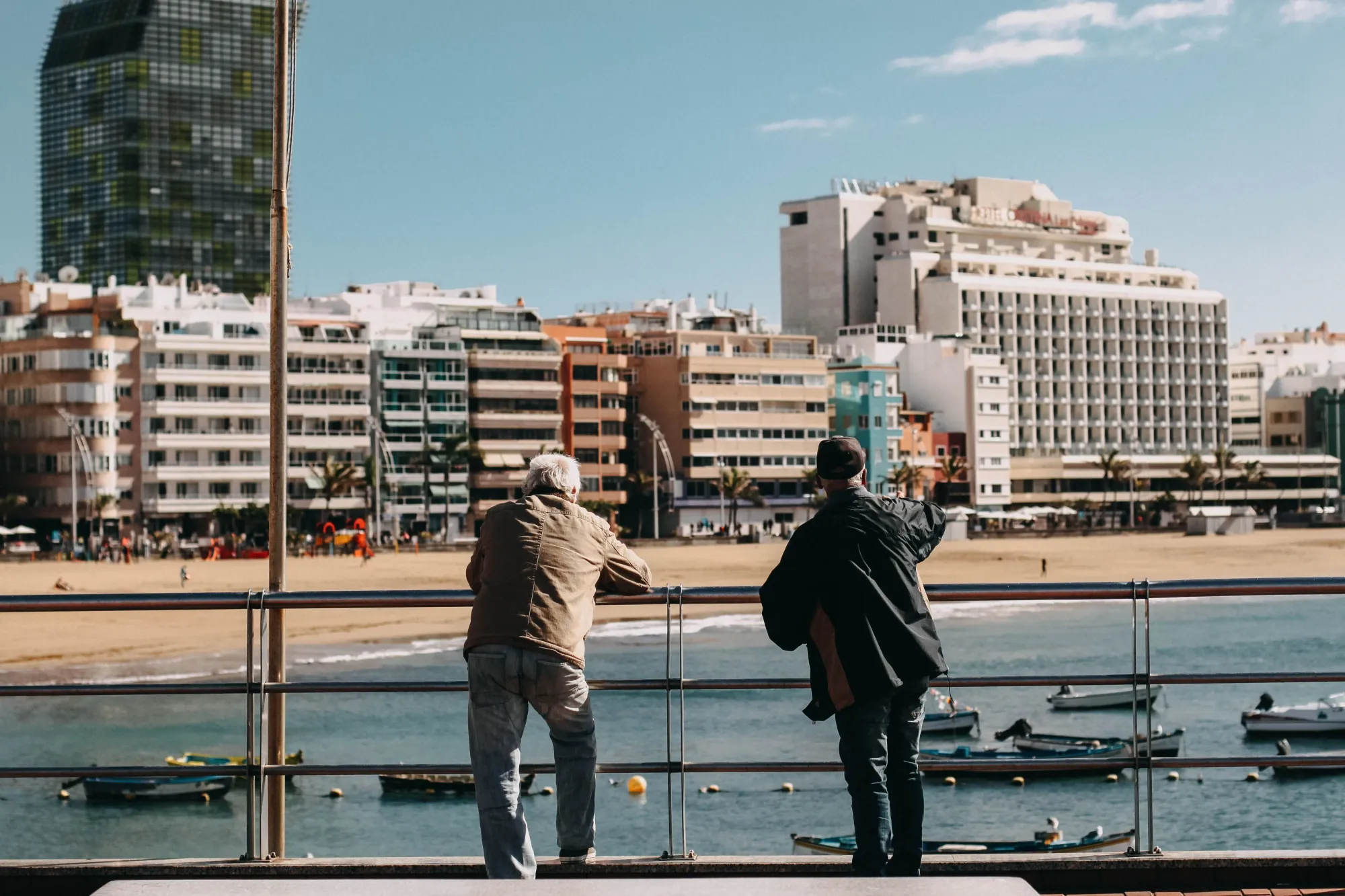
Maspalomas: Best for beach lovers
Maspalomas is your best bet if you love the beach. It's known for its stunning dunes and vibrant beach life, plus, it's a great spot to unwind after a day's work with plenty of beach bars and restaurants. I personally loved this place, but be aware, though, that it is among the fanciest areas on the whole island.
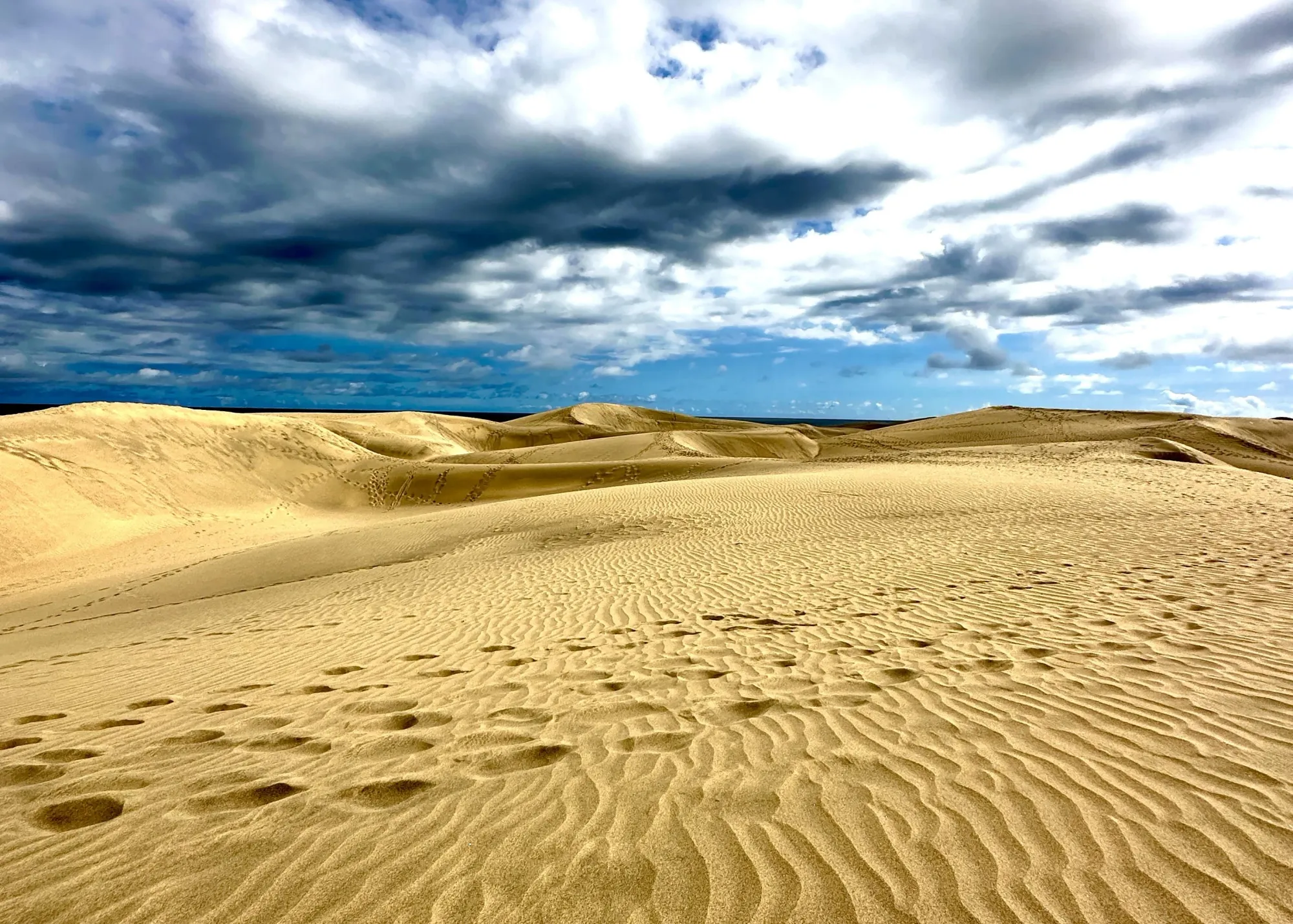
Lloret, El Confital, and El Frontón: Best for surf
Lloret, El Confital, and El Frontón are must-visits for the surf-loving nomads. These areas are famous for their top surf spots, attracting surfers worldwide. Not just about the waves, these areas also offer a laid-back lifestyle and a chance to mingle with other local surfers.
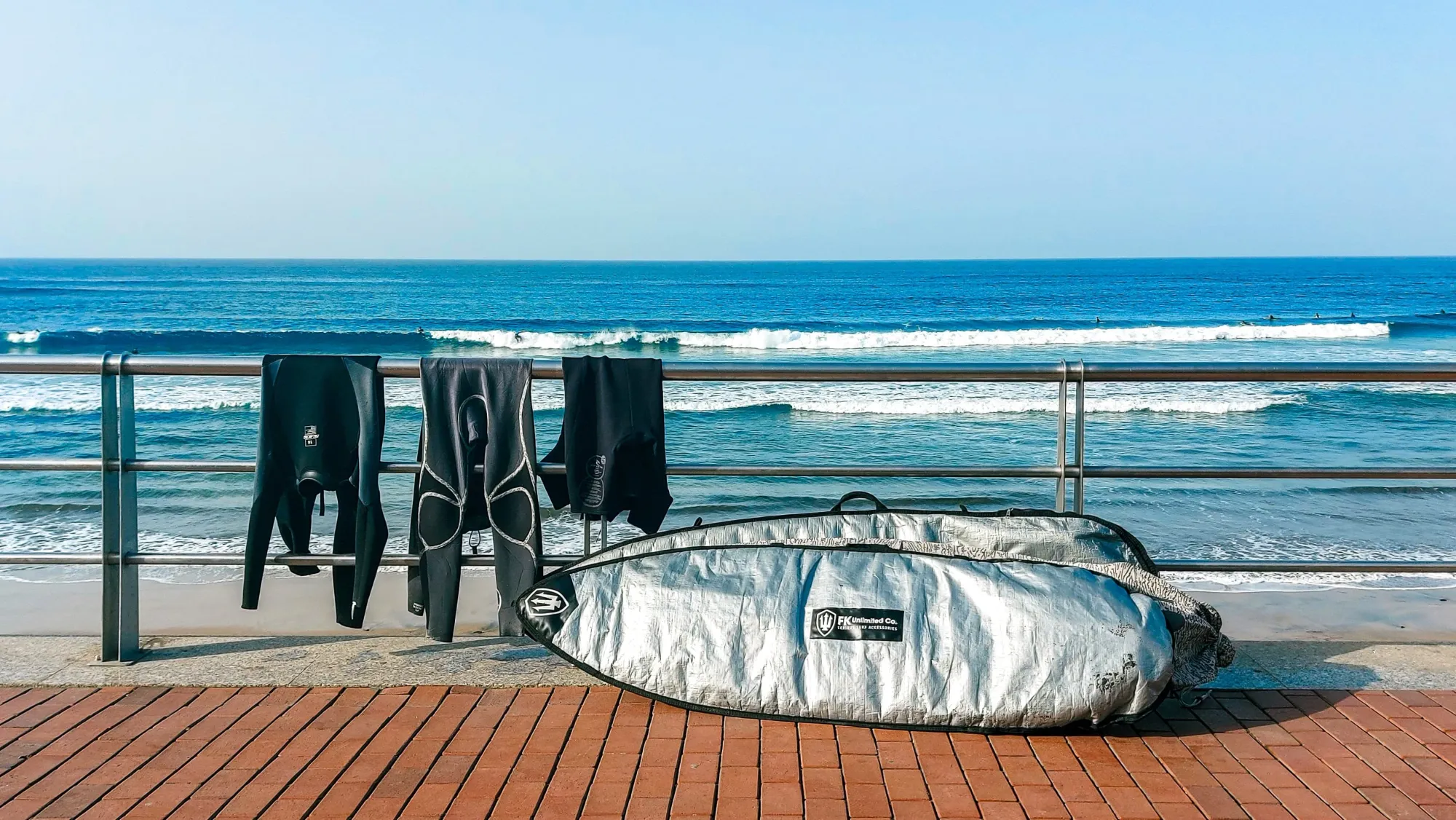
Agaete: The hidden gem
For a taste of authentic island life, you gotta head to Agaete. This lesser-known area offers a peaceful retreat away from those tourist crowds. It’s perfect for digital nomads who appreciate nature and tranquility. The nearby Agaete Valley, with its coffee plantations and lush scenery, is a bonus for some leisurely weekend explorations.
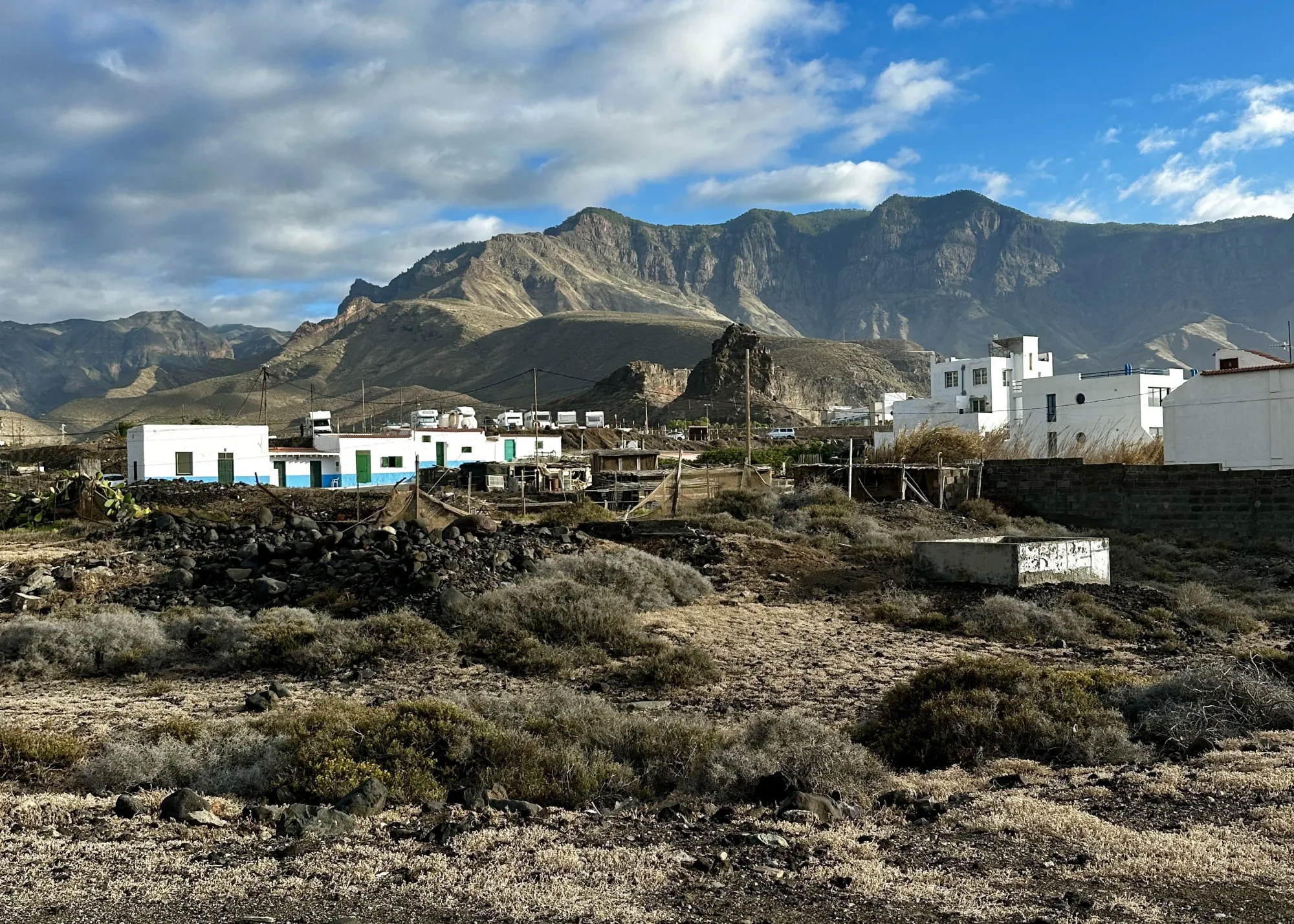
Arguineguín: Best for a more local experience
Arguineguín is a fishing town that is more suitable for nomads looking to immerse themselves in local Canarian culture. It's less touristy than other spots but still offers all the essentials. It's a great middle-ground for those who want a bit of everything: local vibe, beach life, and "a touch of tourism".
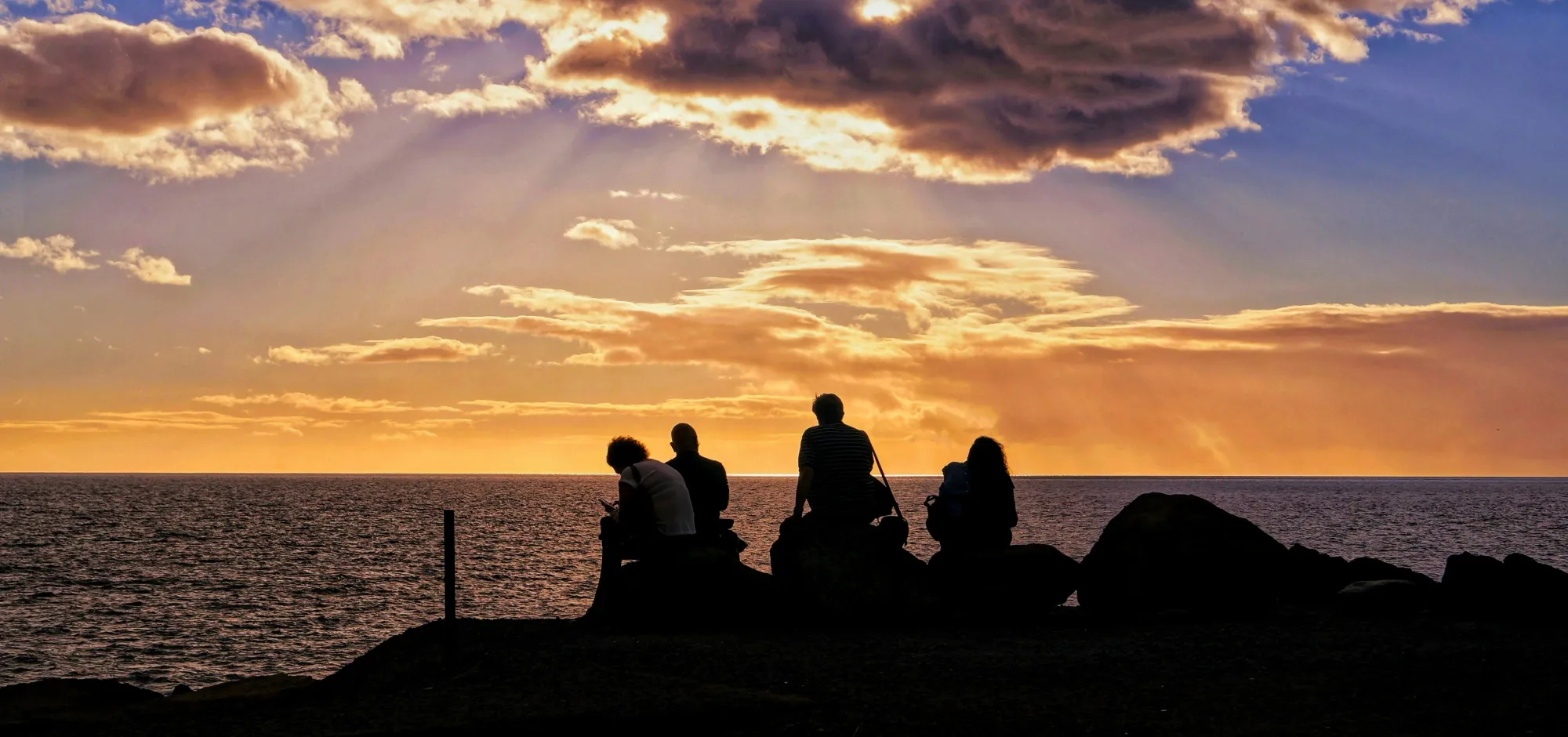
Teror: Best for outdoor enthusiasts
Teror is a good choice for those who prefer cooler climates and lush green landscapes. It's known for its beautiful basilica and quaint streets. It’s a quiet, picturesque town perfect for getting away from it all while still being within reach of the island’s other attractions.
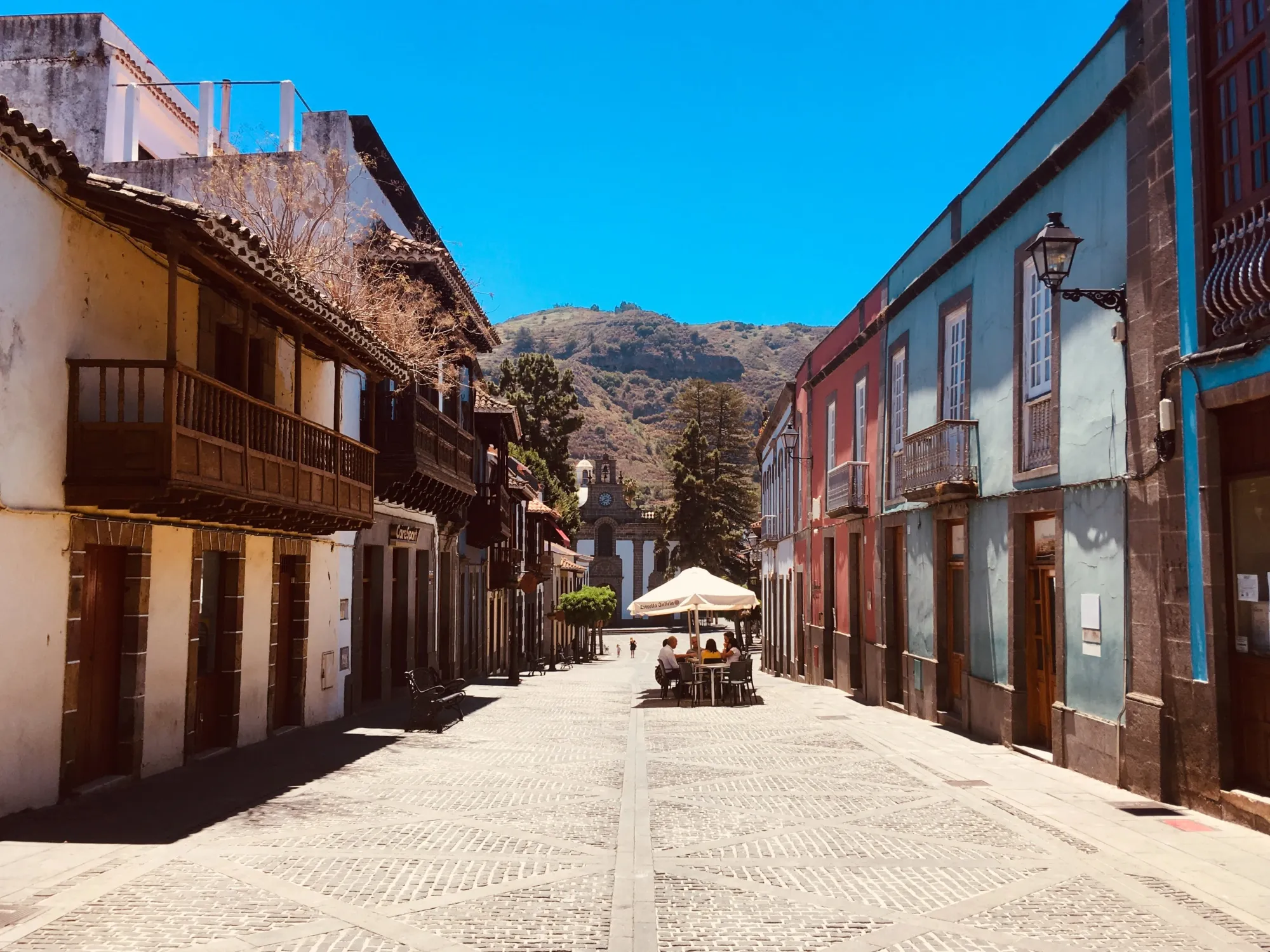
Puerto de Mogán: The Venice of the Canaries
Puerto de Mogán is known as the Venice of the Canaries and it's this quaint fishing village turned resort town that offers a more relaxed pace. I must admit that it's a bit touristy but its pretty canals, flower-adorned streets, and cozy eateries make it a great place for nomads seeking inspiration in a more visually pleasant setting.
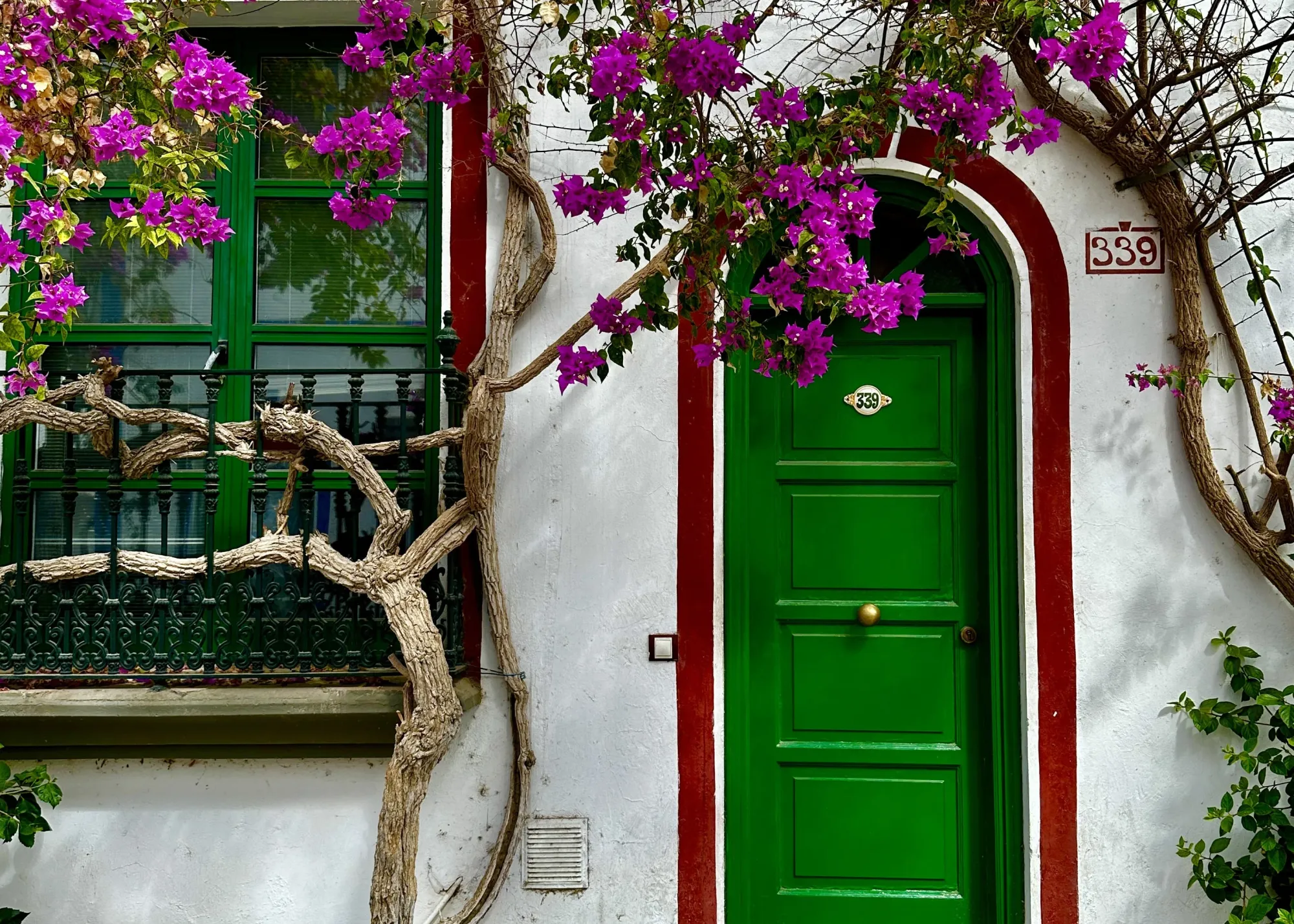
Accommodation Options in Gran Canaria
The next big question is probably where to leave your backpack and sleep during your stay. Below are some options I recommend.
Private apartments/houses for long-term stays
If Gran Canaria is going to be your home for some time, renting a private apartment or house is your best bet. This option gives you your own space and the freedom to really settle in and having your own kitchen means you can whip up some local dishes whenever you like (that's what I do usually). You can find a range of choices, from cozy studios to beachside villas on rental websites like Idealista and Airbnb.
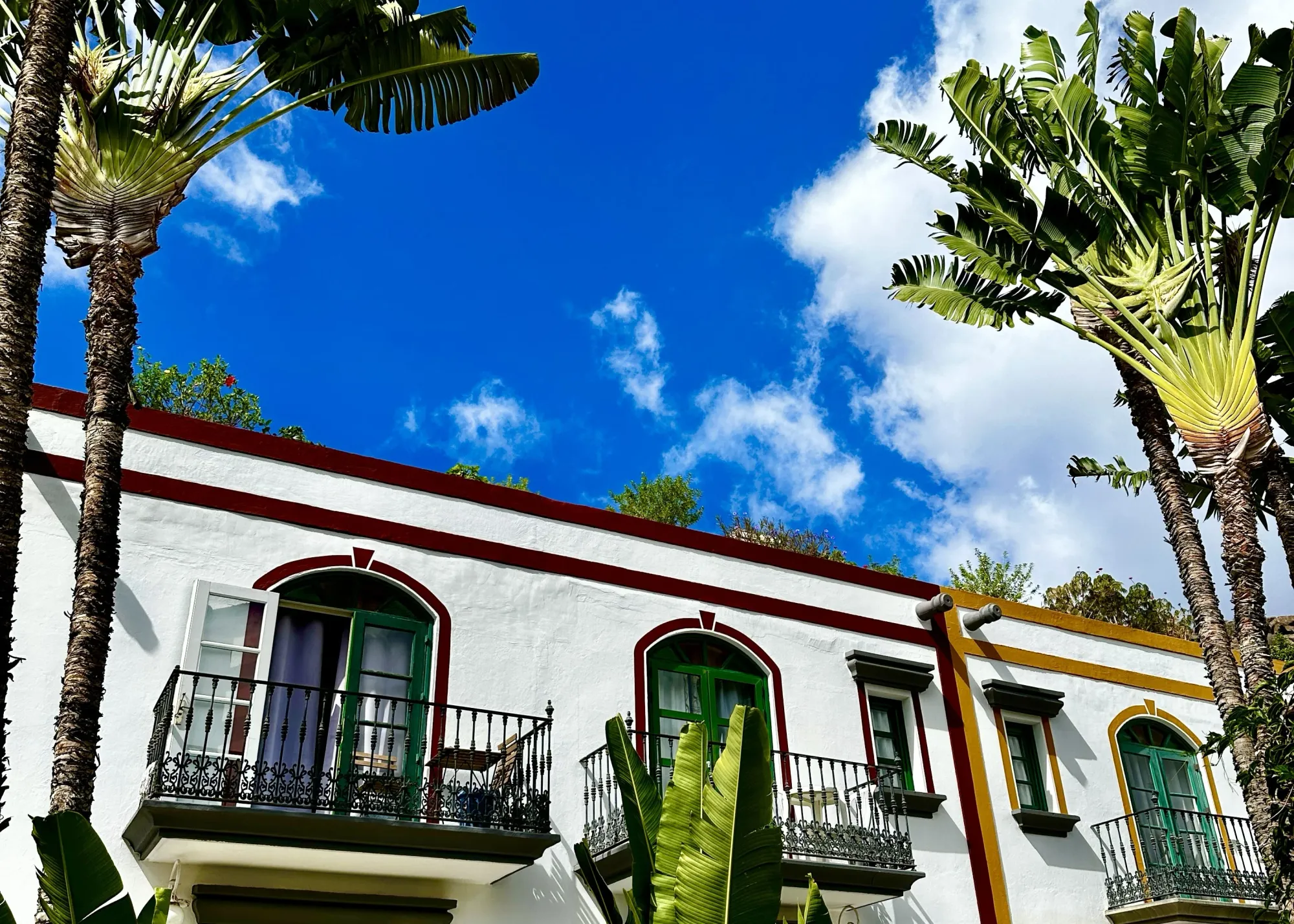
Best Coliving Spaces for Community
For nomads craving a community vibe, colivings and hostels always hit the spot. Repeople offer several coliving spaces like The Roof, The Artisan House, Mozart House, and The Mansion on the island. That's a great community to join if you want to find networking opportunities and social activities like volleyball matches, food socials, and tapas nights. Another good option is also Palma Coliving, renowned for its dynamic community life, weekly events, and top-notch coworking spaces.
Hotels Shorter Stays
For shorter stays or a more carefree and premium experience, hotels are a go-to choice. beCordial Hotels & Resorts, for instance, offers accommodations specifically designed for digital nomads. Apartments Cordial Mogán Valle in Puerto de Mogán and Cordial Santa Águeda holiday homes in Arguineguín are other interesting picks.
Internet and WiFi in Gran Canaria
A necessity for digital nomads is, of course, reliable internet. And Gran Canaria gets it as it offers a super-developed internet infrastructure for remote workers. The island is pretty well-equipped in terms of connectivity, offering 4G across the island and 5G in select areas like Las Palmas.
And if you want to take advantage of the strong 4G/5G connection while using your phone as an hotspot local SIM providers like Movistar, Orange, and Vodafone all offer pretty cheap SIM cards or you can also opt for an eSIM from top eSIM providers like Airalo or Holafly instead.
Either if you decide to use the WiFi at your apartment, an eSIM or going local with SIM providers, staying connected in Gran Canaria won't be a problem. We are talking about one of the fastest connections I ever experienced on an island, with some places having more than 120Mbps in download and upload speeds.
You will also be pleased to know that cafes, libraries, and even some beaches all offer free internet access and it's not rare to stumble upon places with free WiFi on the island.
Best Places to Work From in Gran Canaria
Coworking Spaces
Gran Canaria's coworking spaces are as diverse as its landscapes, offering everything from vibrant community hubs to quiet nooks for deep focus.
- The House – This place has an inviting ambiance, standing desks, and a roof terrace. When talking to the owner, he mentioned that he will move soon from its current location. So make sure to check their actual location, as it might change from the time of writing!
- The Beach House – This is my favorite coworking as it definitely added a touch of seaside serenity to my workday. It is located near the beach and it's perfect for those who want to mix productivity with relaxation. The only cons of this coworking is that they have no phone booths and sometimes can be a bit loud if you like to work in silence. If you are a social butterfly instead, the owner is such great fun himself and will ensure you get to know all the other members of their wonderful community!
- Soppa de Azul – It's an artistic space that doubles as a gallery, making it a prime spot for those who draw inspiration from the arts.
- RePeople Coworkings – They offers several coworking spaces across the island, each with its unique flair. These spaces are known for their vibrant communities and are a must if you want to get to be close to the digital nomad community on the island.
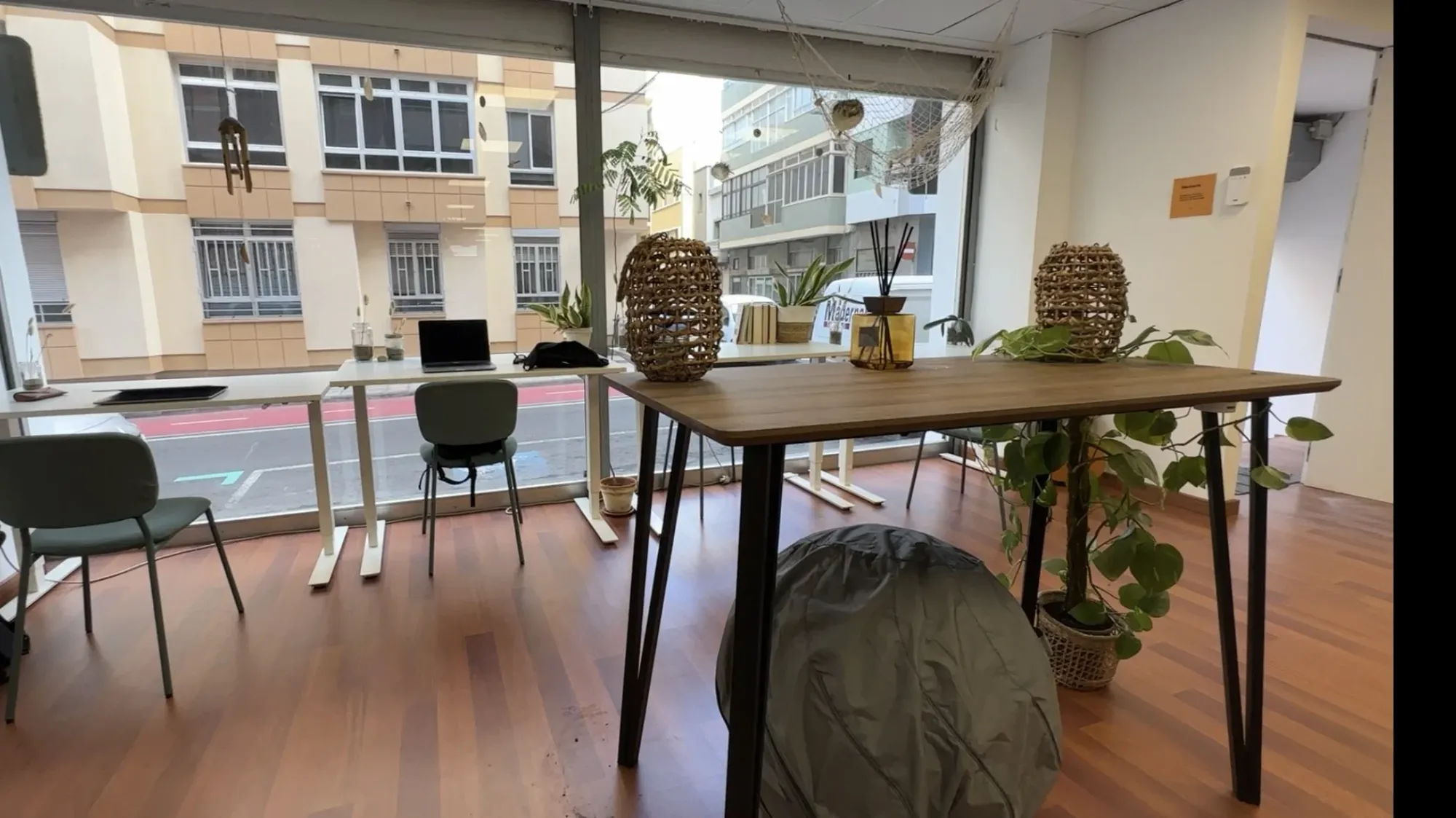
Laptop-Friendly Cafés
- Un Lugar Cafe – It is the most popular café among remote workers on the island, and it's almost like a coworking, but free of charge (of course, make sure to get a cup of coffee or something to consume!). It has a peaceful ambiance, and has such a fast internet! In some cases, it was even faster than some coworkings I visited. The only cons are that they close at 4 PM and don't have many snack options.
- LUWAK – Located in Las Palmas, it’s a great spot for those casual work sessions or to enjoy a good brew while catching up on emails. They do offer a good variety of snacks, but I must say that the place sometimes feels a bit too dark. They also close early, at 4.30 PM (it's a common theme in Las Palmas).
- Talleres Palermo – More than just a café and more a creative hub. Its unique blend of coffee, snacks, and cultural events makes it a fantastic place to work and hang out with other remote workers even after work. Like LUWAK, they close at 4:30 PM but reopen at 7 PM until late at night!
- Starbucks in Playa de las Meloneras – For those who don't need lightning-fast internet, but still want to enjoy working with an ocean view, Starbucks in Playa de las Meloneras is one of my favorite places on the island. The internet might not be the fastest, but the café-on-the-beach experience more than makes up for it, and they are also open until 10 PM!
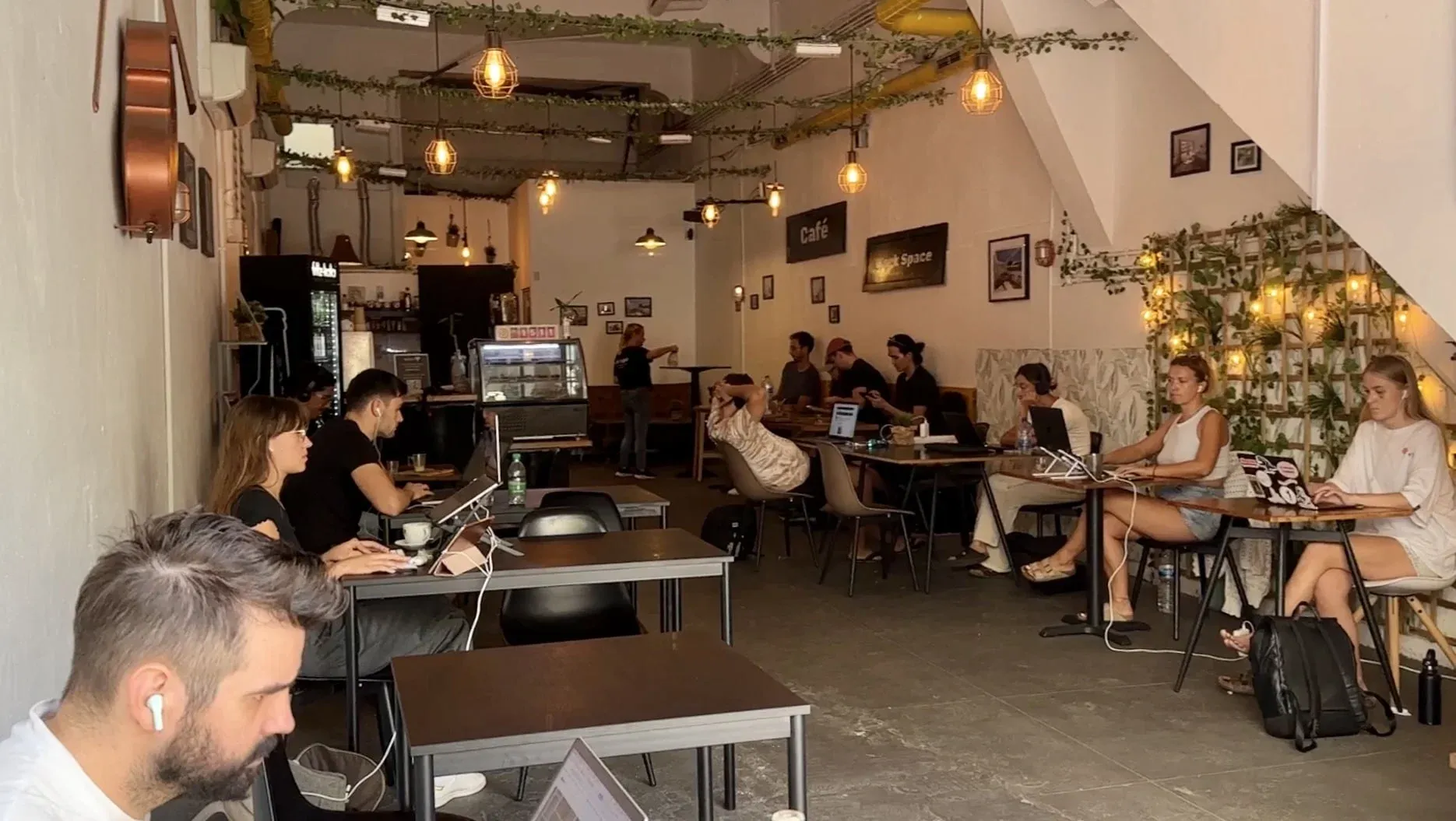
Cost of Living in Gran Canaria
As a digital nomad who's had the pleasure of living in Gran Canaria, let me share a real live view of the actual expenses.
Accommodation Costs
Accommodation is where you'll spend a good chunk of your budget. Generally, an entire house on Airbnb averages between €900 to €1,500 per month (that's about $1,015 to $1,690). But I personally snagged a deal for just €600 (around $676) for a whole month. The catch? It was up in the mountains, a 45-minute drive from both the south and north coasts. It's a trade-off between cost and convenience. So, if you're looking to save on accommodation, be prepared to sacrifice a bit on location.
Eating Out and Restaurant Costs
Local dishes in a typical restaurant cost around €10 to €15 per person (approximately $11 to $17). For a special night out, a three-course meal for two in a mid-range place is about €50 (around $56). If you're watching your budget, cooking at home or grabbing ready-made meals from supermarkets is the way to go.
Grocery Costs
Grocery shopping is pleasantly cheaper than on the mainland and the place to save money is the Hyperdino supermarket chain. Here's a snapshot of costs:
- A liter of milk is €1.00 (about $1.13)
- Bread (500g) at €0.85 (just under $1)
- Chicken breast (1kg) for €4.99 (about $5.62).
- 250g of coffee (a must for those work-from-home mornings) costs around €2.29 (approximately $2.58)
Coffee and Cocktail Prices
Speaking of coffee, a cup of espresso or a cortado is just €1 to €1.50 (about $1.13 to $1.69). And for cocktail hour, prices in bars range from €3 to €4 for simpler mixes, averaging around €6 to €10 (approximately $6.76 to $11.27).
Fuel Costs
For car rentals, gasoline costs about €1.27 per liter (around $1.44, or $5.45 per gallon), and look out for Petrol Prix gas stations as they are the cheapest on the island.
Gym Membership and Surf Lesson Prices
Gym memberships are a bargain here, costing between €30 to €50 a month (about $34 to $56). And for surf enthusiasts, lessons range from €35 to €50 per session (roughly $39 to $56). Worth every cent for riding those amazing waves.
Visa Requirements and Digital Nomad Visa for Gran Canaria
If you are European, you obviously won't have any issues in getting in the island. But if you come outside the EU, these are the options you have as a remote worker:
Tourist Visa for Short Stays
For stays up to 90 days within a 180-day period, many nationals, including those from the US, Canada, and Australia, can enter Spain without a visa. This arrangement allows for travel and work within the Schengen Area, making short-term stays straightforward.
Spain Digital Nomad Visa for Long-Term Stays
Spain's newly introduced digital nomad visa is also great for non-EU citizens working for companies outside of Spain. If you hold an undergraduate degree, have at least 3 years of professional experience, and can prove your employment status with a foreign company, this visa could be your ticket to a longer stay in Spain. Along with you, your family members can also benefit from this visa.
Key requirements include:
- health insurance coverage
- proof of sufficient financial means
- a clean criminal record
The application process involves submitting various documents, including:
- the National ID number (NIE)
- a recent photograph
- a valid passport
- proof of residence
Decisions are typically made within 10 days.
Other Long-Term Stay Options
For stays exceeding 90 days, the Non-Lucrative Visa and Self-Employment Work Visa are traditional pathways. The Non-Lucrative Visa suits those who can sustain themselves financially without local employment, while the Self-Employment Visa is ideal for starting a business or freelance work in Spain.
Other Useful Information for Digital Nomads
When Is The Best Time to Visit Gran Canaria?
Honestly, Gran Canaria is one of those rare places where ‘anytime is a good time’ holds true. With about 300 days of sunshine a year, the island is a year-round destination for digital nomads. However, depending on what you're looking for, some months might suit you better than others.
Late Spring and early autumn: The Best of all worlds
The sweet spot for visiting Gran Canaria is during the late spring (April to June) and early autumn (September to November). During these months, the weather is particularly pleasant – not too hot, not too cold – perfect for both work and play. The island is less crowded, giving you more space to explore and enjoy.
Summer: Best sun, sea, and festivities
In summer (July to August) in Gran Canaria the weather is very warm, making it perfect for beach activities, water sports, and exploring the coastal towns. It’s the peak tourist season, so expect the island to be livelier (and more crowded). Although it's not the best time considering the crowd, it's also true that during this time the island hosts various local festivals and events, offering a deep dive into the island’s culture. So, up to you!
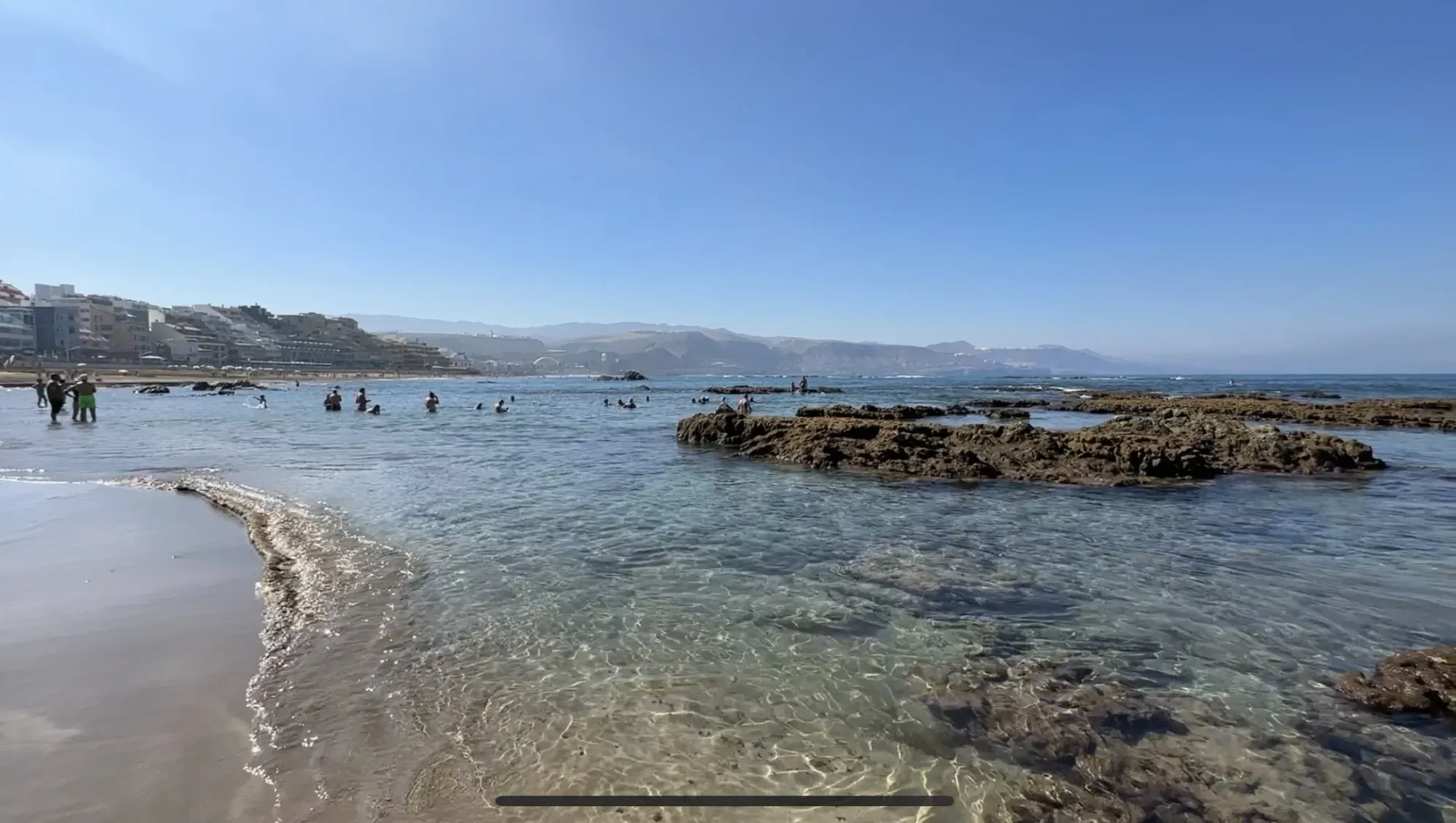
Winter: More mild and relaxed
Winters (December to March) in Gran Canaria are mild compared to much of Europe, with cooler evenings but still plenty of sunshine. It’s a great time for digital nomads who prefer a more relaxed pace. The winter months are ideal for outdoor activities like hiking and exploring natural landscapes, as the temperatures are comfortable for physical activities.
Transportations and How to Move Around in Gran Canaria
Public buses, taxis, and car rental services are all available at the airport as soon as you land to Gran Canaria. The bus service is the cheapest option, with regular routes to major towns and tourist areas. If you prefer more comfort or have a lot of luggage, taxis are a more convenient choice, while car rentals will give you the ultimate flexibility to explore the island at your own pace. The latter is personally my favorite choice as renting a car with the most well-known Canarian company Cicar is, without exaggeration, among the cheapest in Europe (only around €19/$20 a day for a brand new Fiat 500).
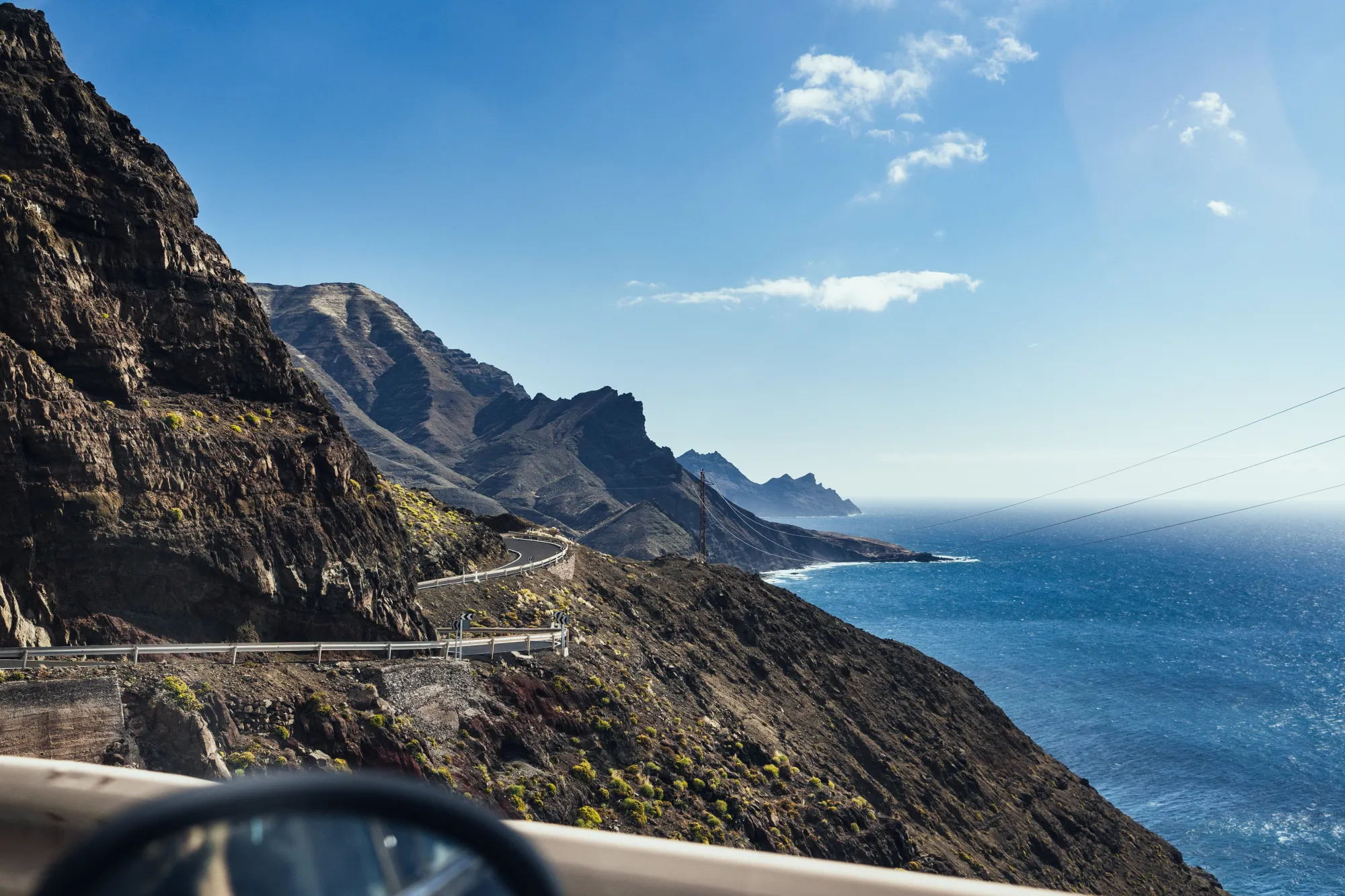
Where Should I Eat? Food in Gran Canaria
The island's culture is steeped in history, marked by influences from the Guanches, its original inhabitants, and the Berbers. You'll find traces of these ancient cultures in various historical sites and museums across the island. Gran Canaria also blends its rich cultural heritage with an array of culinary delights.
Food in Gran Canaria is a blend of Spanish, African, and Latin American flavors. One can't-miss dish I recommend is papas arrugadas con mojo (wrinkled potatoes with a spicy sauce) which is a staple in local cuisine. The island's seafood is also exceptional, thanks to its fresh and diverse catches. Here are some restaurants I ate that I feel recommending:
- Restaurante Tasca Galileo
- Bar Restaurante Tatono
- Tasca La Caldera
- Bar Restaurant Roque Nublo
- La Tasquita Galega
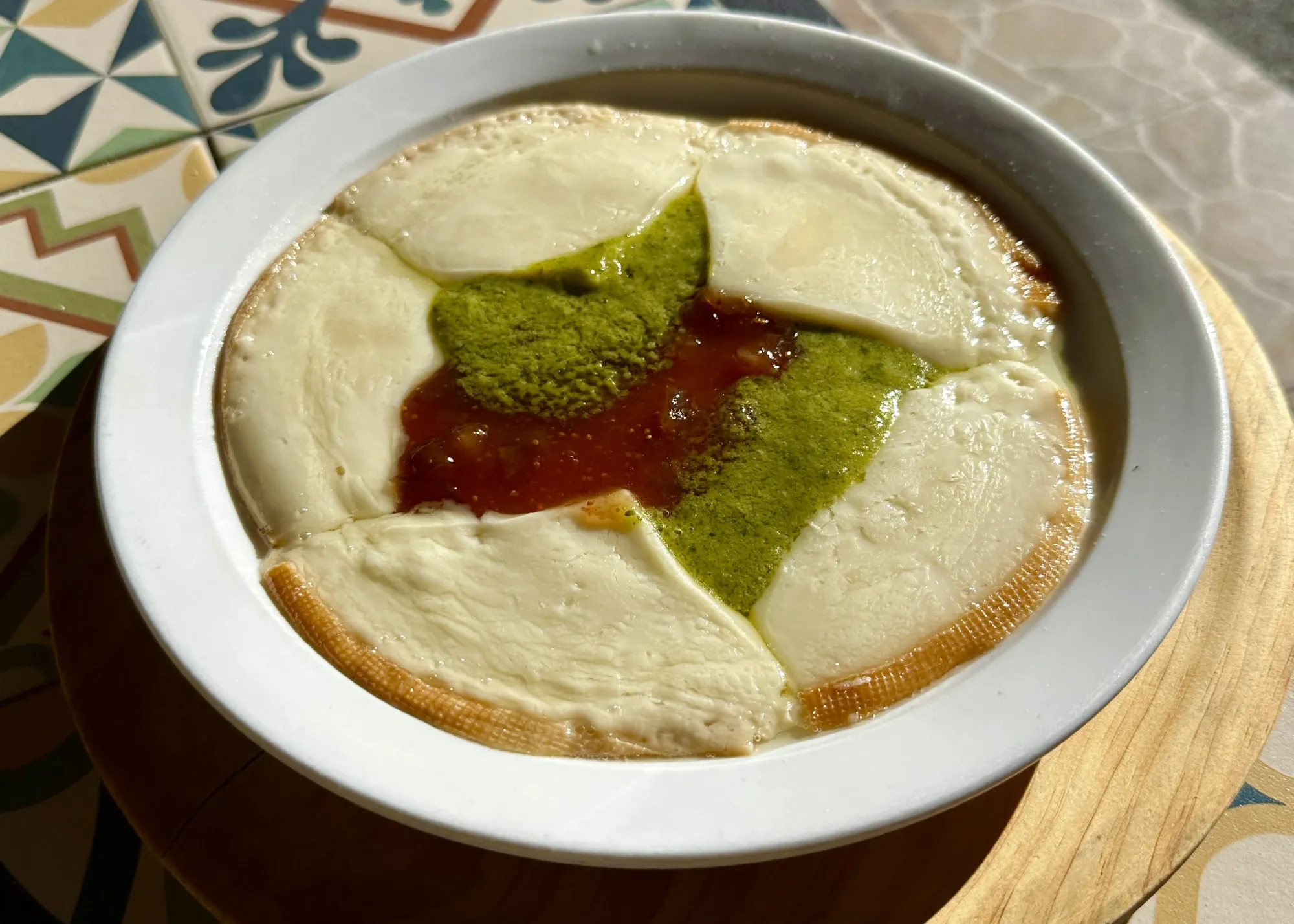
For those times when you crave something different, Gran Canaria's international restaurants won't disappoint. That's some cafés and restaurants I loved:
- Kim's Pojangmacha – Korean Restaurant
- Avocadismo – Vegan Restaurant
- Delizia Pizzeria Italiana – Italian Pizza
- 200 Gramos Burger & Beverage – Home-Made Burgers
- Chiwawa Cantina Mesa y López – Mexican Restaurant
- Tiki Taco – Mexican Taqueria
- Calma Café – Breakfast & Brunch
Top Things To Do in Gran Canaria
Gran Canaria is not just a fantastic place to work remotely but it's also an island brimming with activities and experiences that can enrich your stay. Let's explore some of the must-do activities in Gran Canaria that make it a haven for digital nomads.
1. See the Dunes of Maspalomas
You gotta see the desert-like landscape of Maspalomas' stunning sand dunes. These dunes offer a remarkable natural experience right next to the ocean.
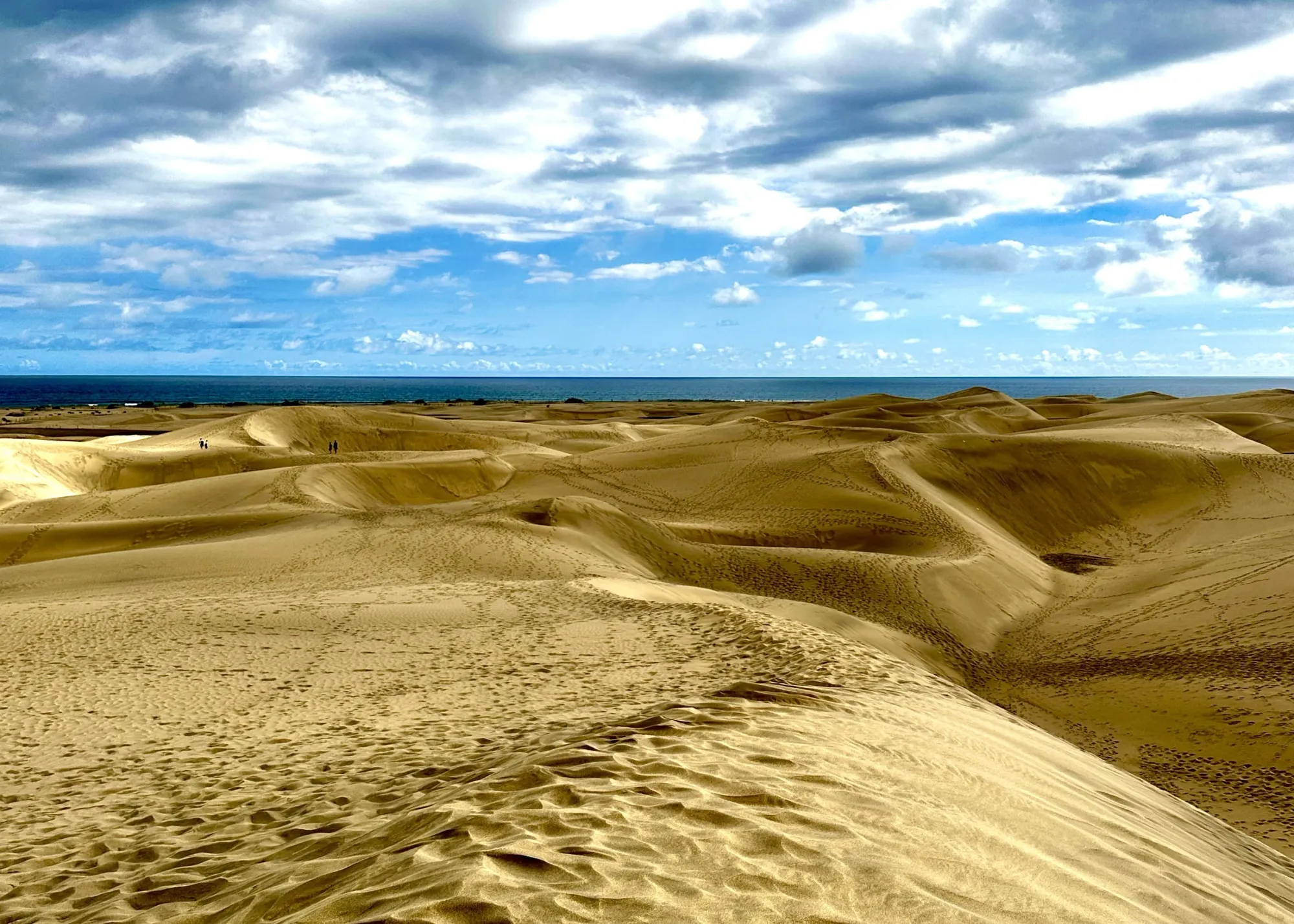
2. Visit the Roque Nublo
As Gran Canaria's most iconic landmarks, this ancient volcanic rock formation stands majestically, offering a challenging yet rewarding hike. Once at the top, you are treated to some of the most spectacular views on the island, so it a must-visit for nature enthusiasts and photographers alike.

3. Explore Barranco de las Vacas
You won't regret visiting this striking canyon. Barranco de las Vacas' formations are reminiscent of the famous Antelope Canyon.

4. Watch the Sunset at Pico de las Nieves
Pico de las Nieves is Gran Canaria's highest point and offers the most breathtaking sunsets, making it a memorable spot for sunset lovers.
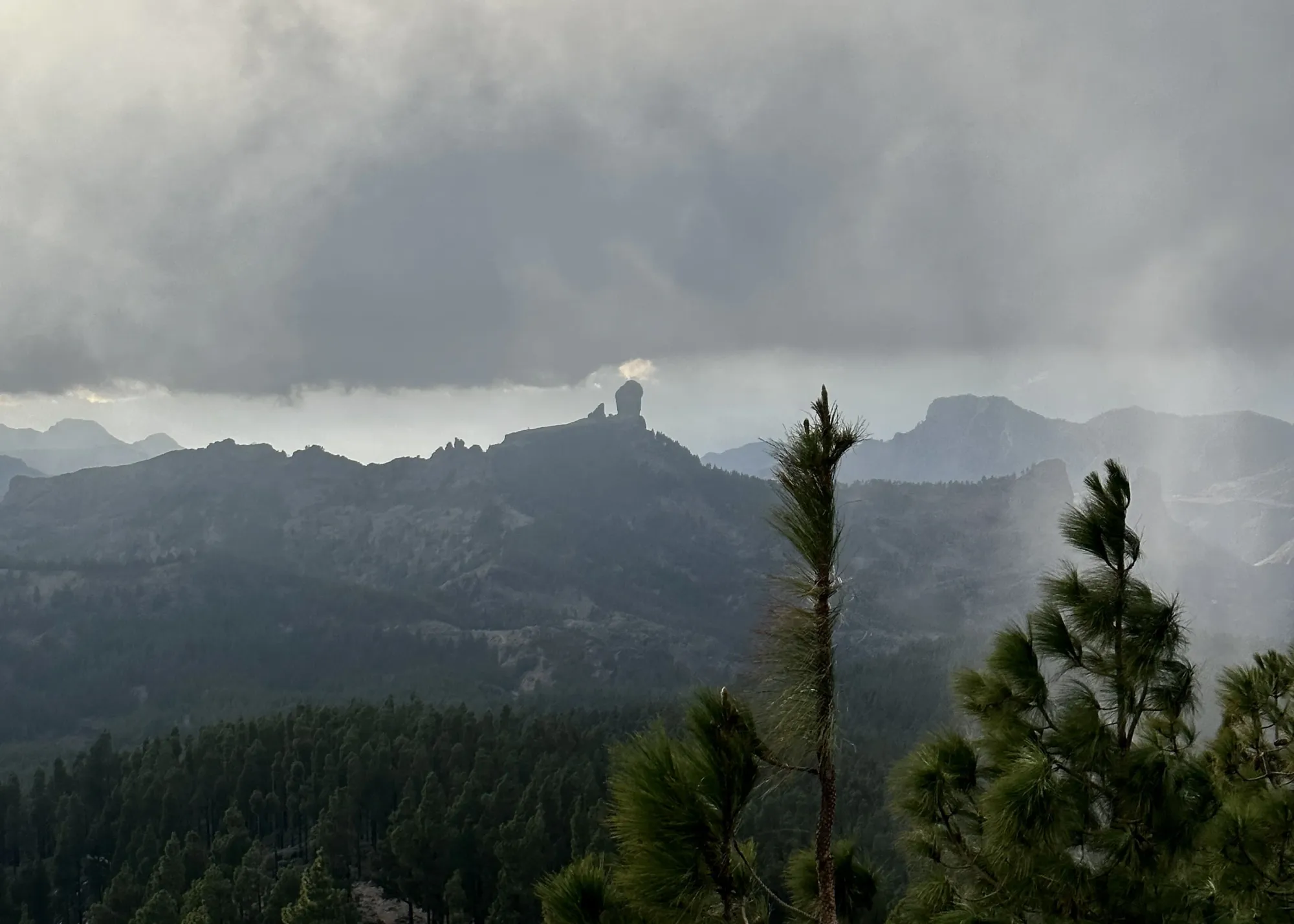
5. Stroll Through Puerto de Mogán
It's an Instagram-worthy 'Little Venice', with charming canals and bridges. Puerto de Mogán's ambient cafes and shops give you a picturesque backdrop for a relaxing day.
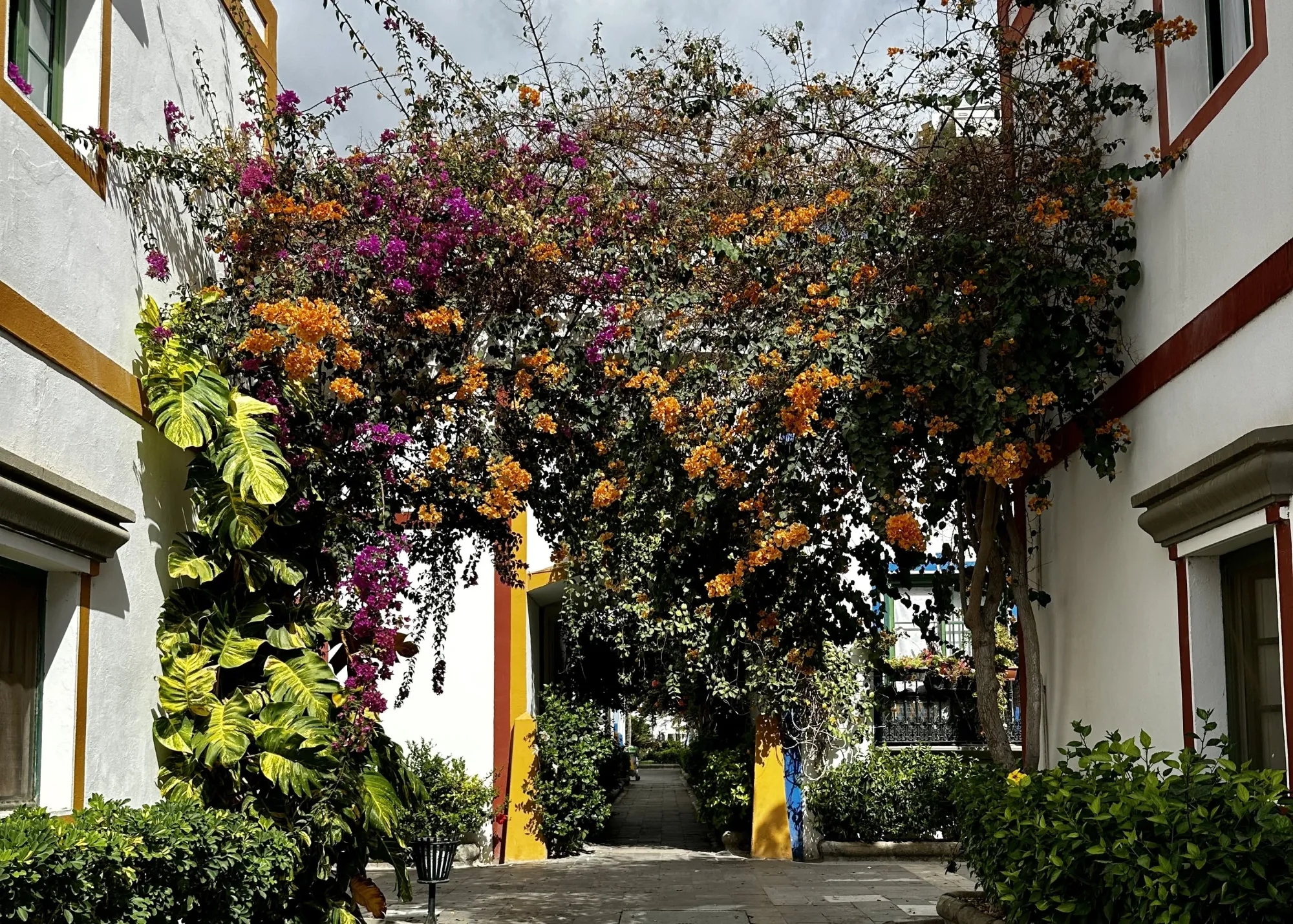
6. Visit Local Towns of Firgas and Teror
Firgas and Teror's picturesque streets are a window into the island's culture, so make sure to check them out!
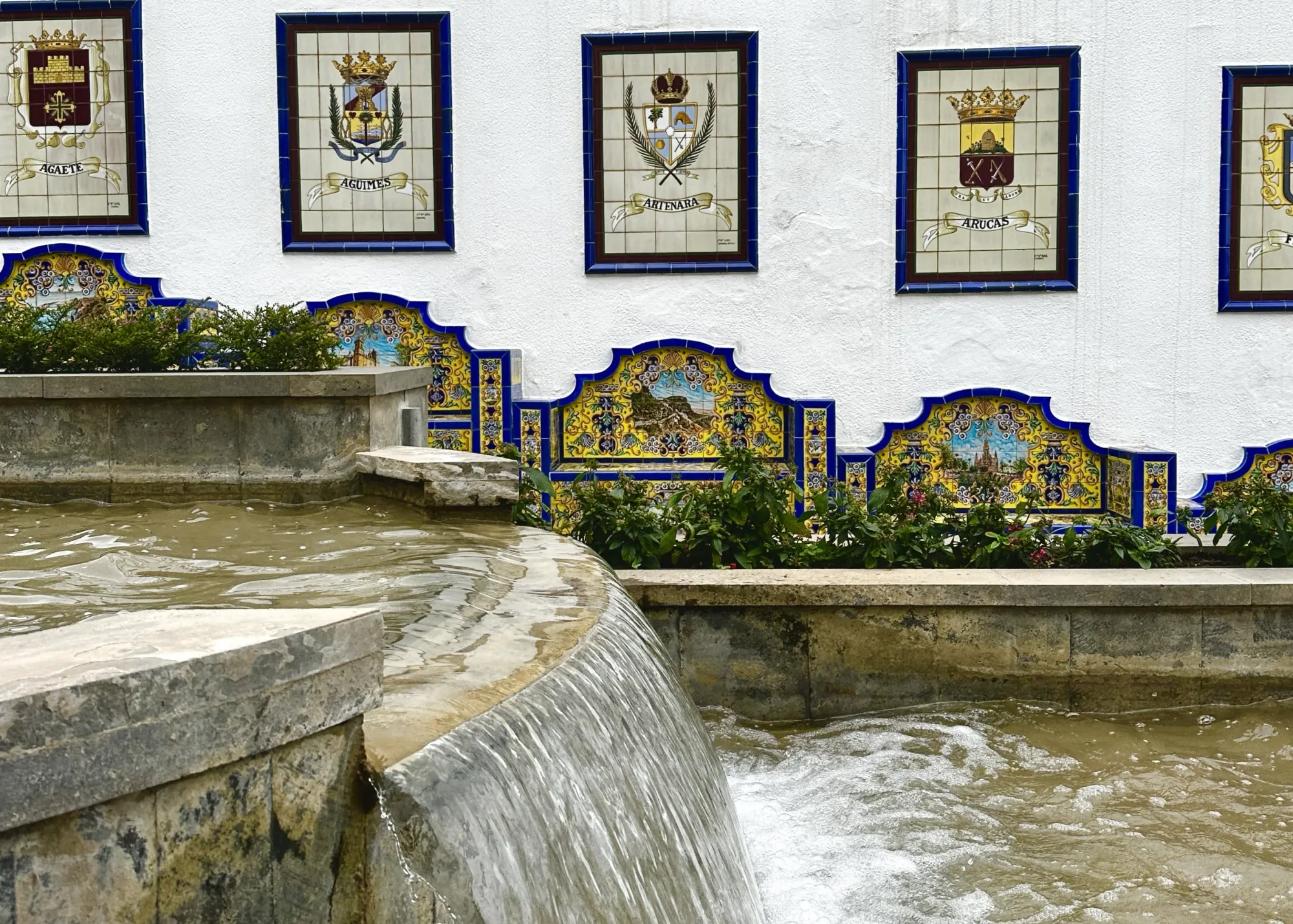
7. Explore the Historic Town of Vegueta
This old town area is rich in culture and architectural beauty, offering a glimpse into the past of Gran Canaria.
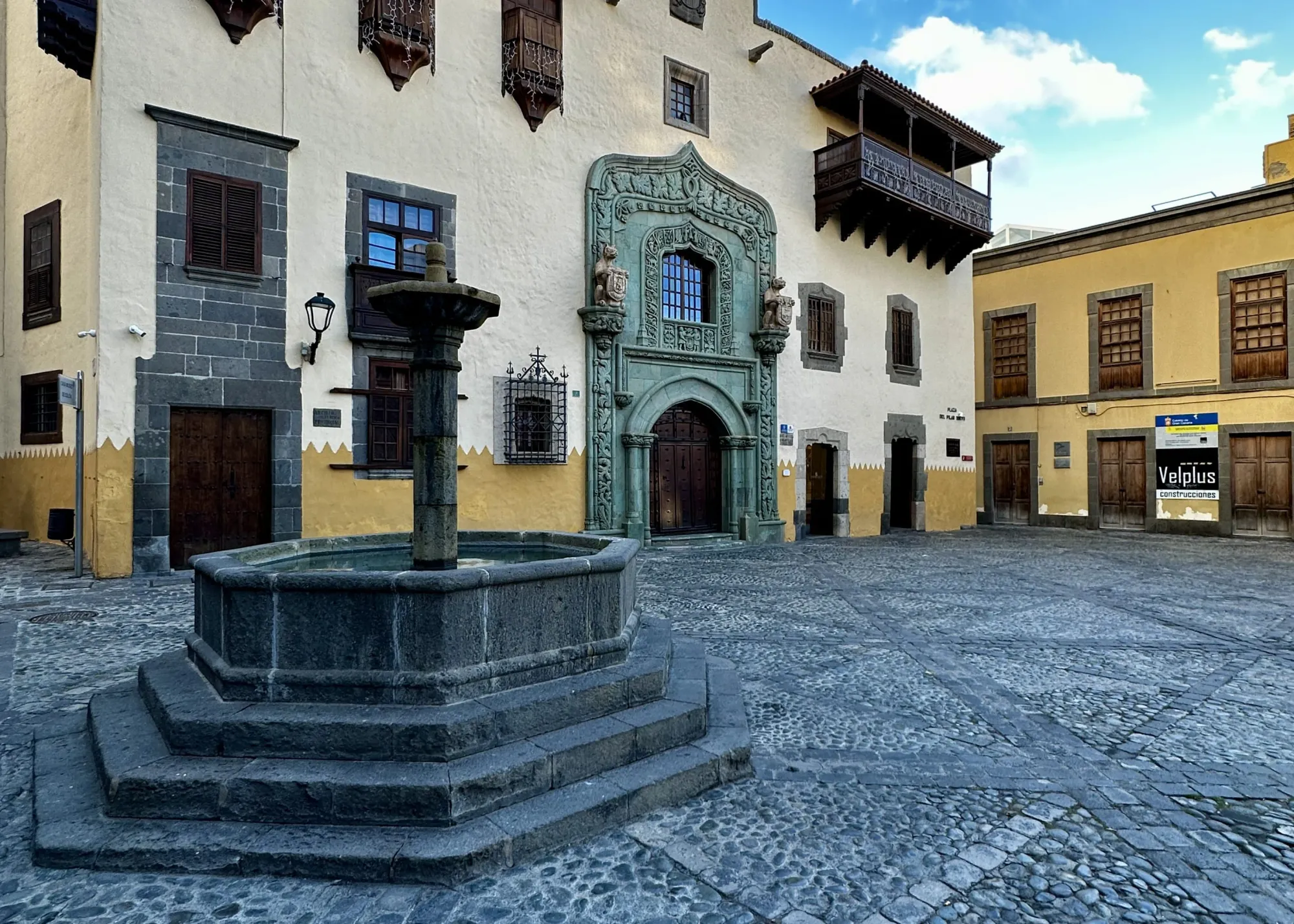
8. Surfing in El Confital, Lloret, and El Frontón
Catch the waves at these renowned surfing spots. El Confital, Lloret, and El Frontón are known for their excellent surfing conditions, suitable for all skill levels.

9. Hiking in Tamadaba Natural Park
The park's natural beauty made of serene trails and lush pine forests make it a haven for hikers.
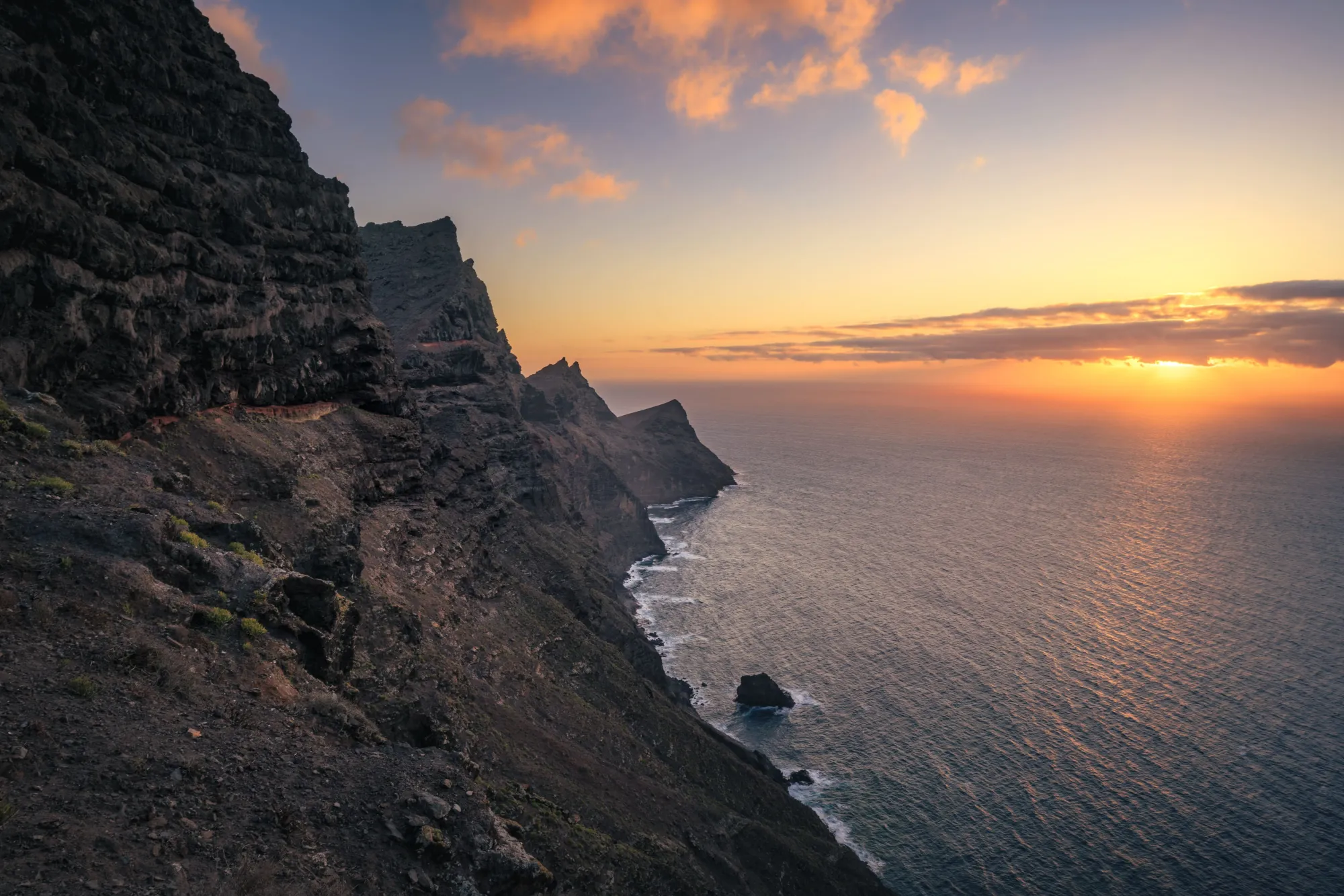
10. Taste Local Delicacies
Indulge in Gran Canaria’s culinary delights, including fresh seafood and the iconic "papas arrugadas con mojo". The island's cuisine is a treat for food lovers.
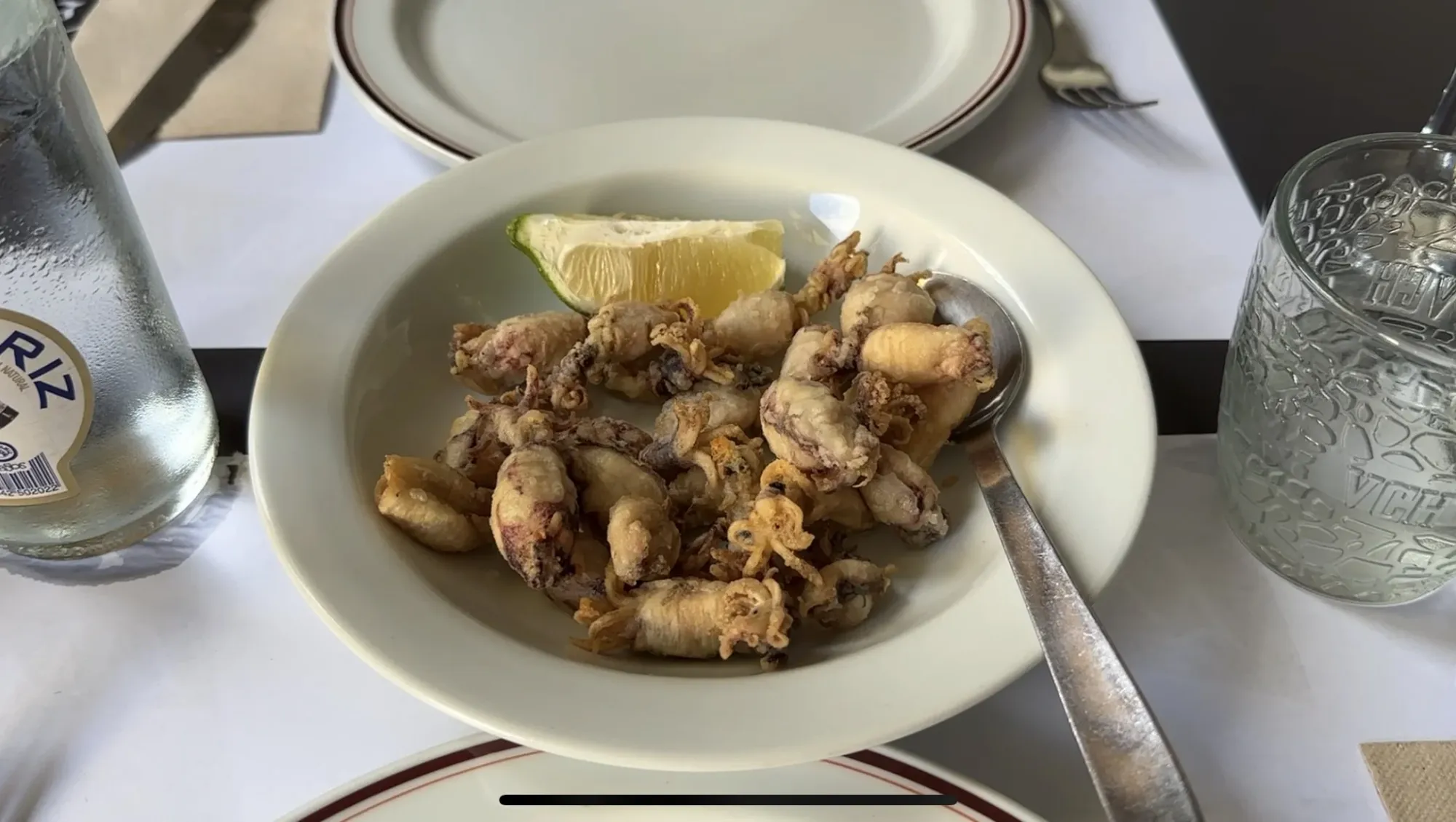
11. Visit Wineries and Coffee Plantations
These unique wineries and Europe's only coffee plantations in Gran Canaria are definitely worth it for wine and coffee enthusiasts.
12. Hike to Playa de Guïguï
Make sure to embark on a hike or a boat ride to this secluded beach. Playa de Guïguï's tranquility and untouched beauty make it a perfect escape for those seeking peace amidst nature.

Is Gran Canaria Safe?
So, if you're wondering about safety in Gran Canaria, well, you'll be happy to know that this island is generally pretty safe. There is a low crime rate and it didn't strike me as a dangerous place.
Of course, the usual travel smarts apply so keep an eye on your belongings and stay aware of your surroundings, especially in some dark streets in Las Palmas by night, which sometimes gave me a dodgy vibe. But overall, Gran Canaria rolls out a safe, welcoming mat for all its visitors.
Ready to Make Gran Canaria Your Next Nomad Destination?
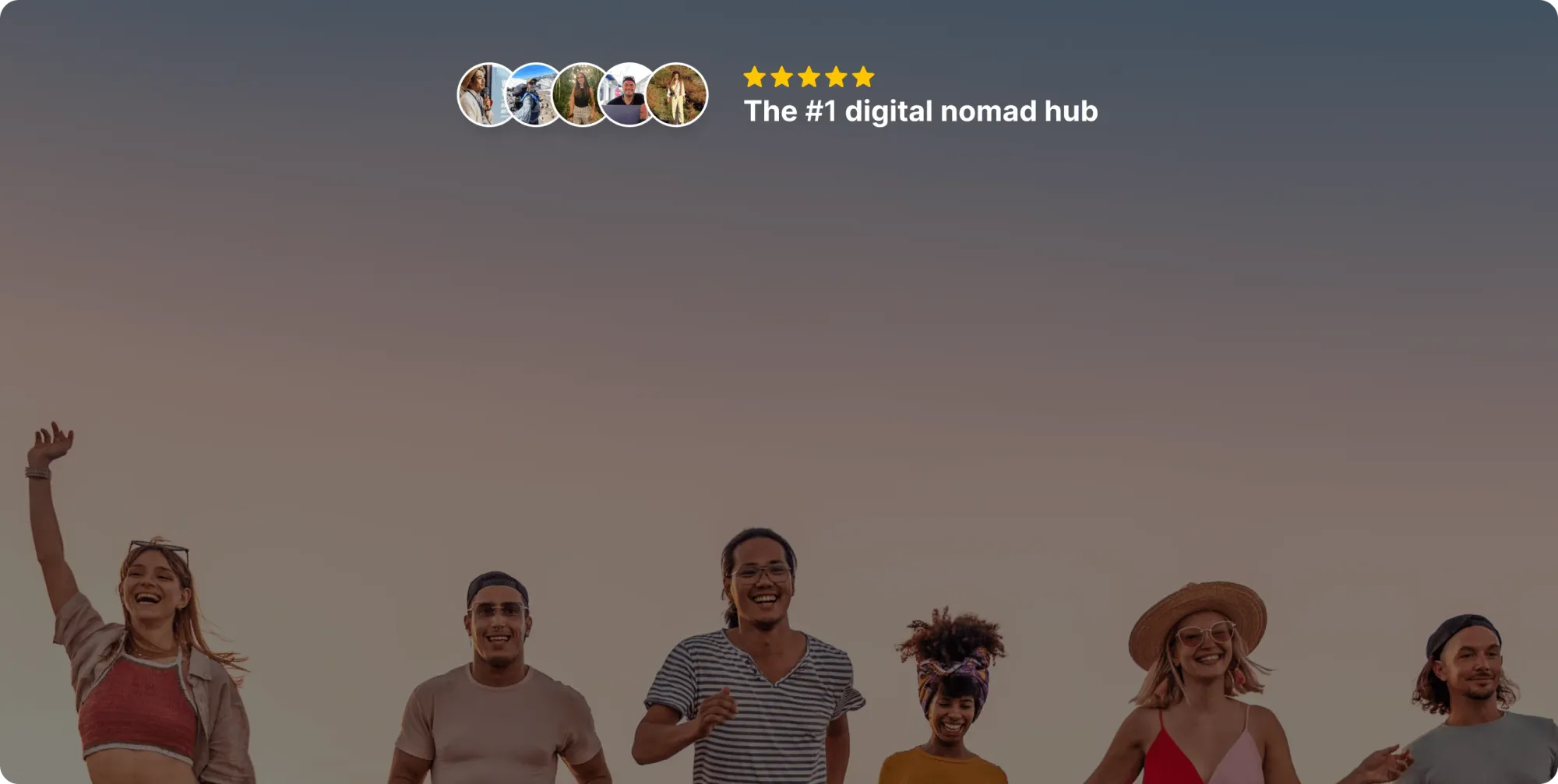
Join our global
digital nomad community
Join us for free
Freaking Nomads is supported by you. Clicking through our links may earn us a small affiliate commission, and that's what allows us to keep producing free, helpful content. Learn more


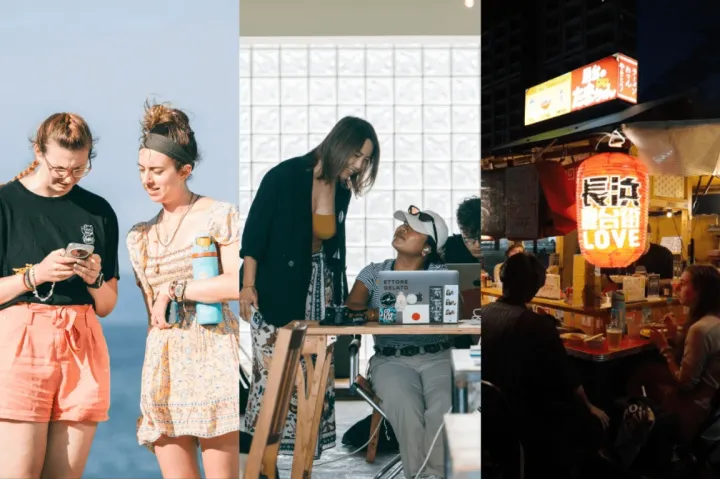
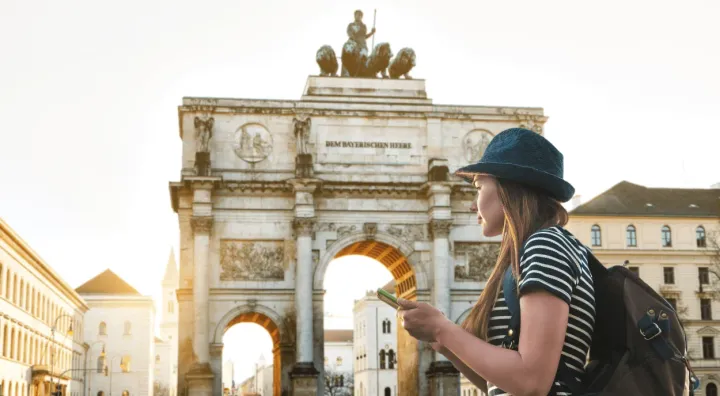
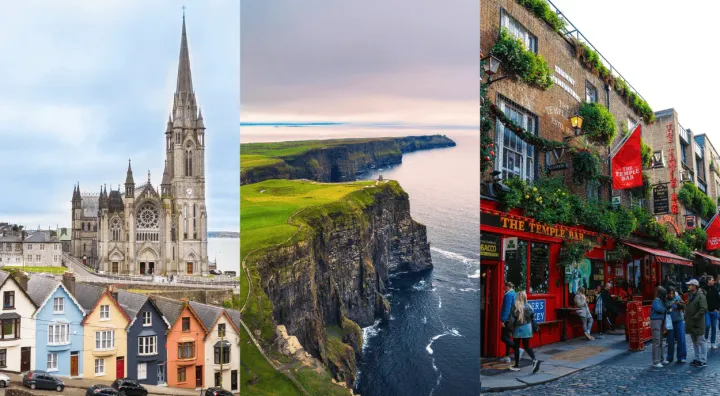
 Travel tips, hacks, and news
Travel tips, hacks, and news Exclusive travel discounts
Exclusive travel discounts Offers and promotions
Offers and promotions Digital nomad inspiration
Digital nomad inspiration Latest articles form our blog
Latest articles form our blog